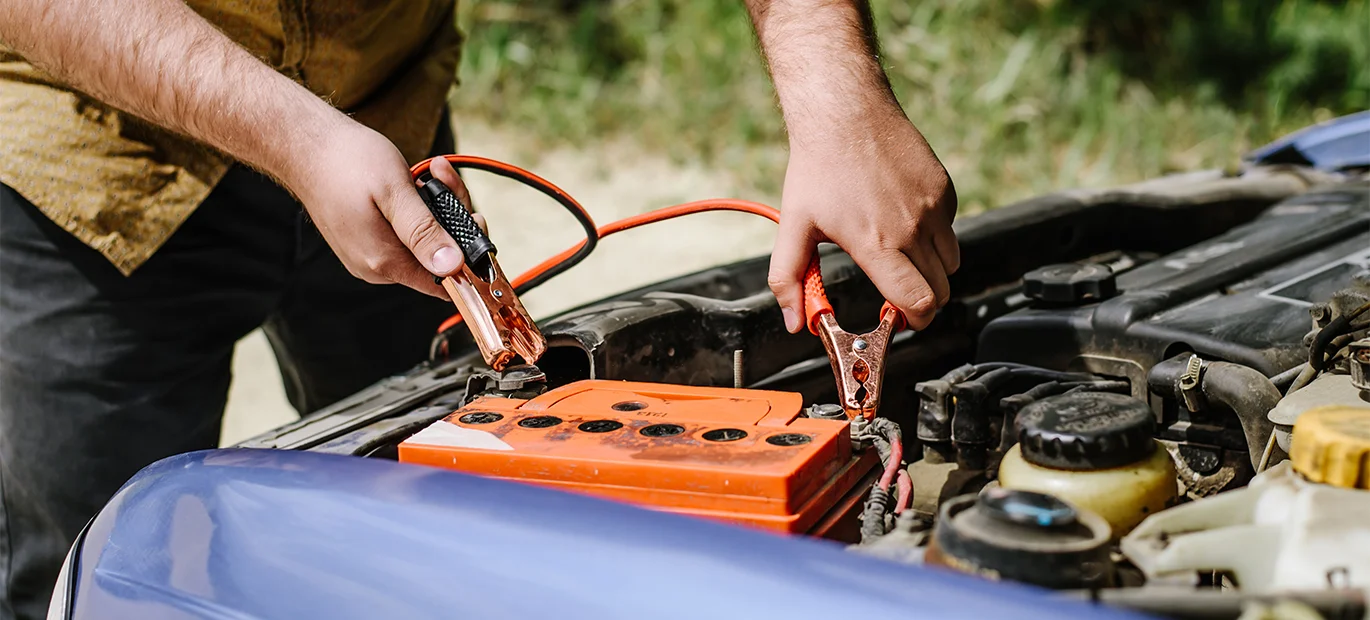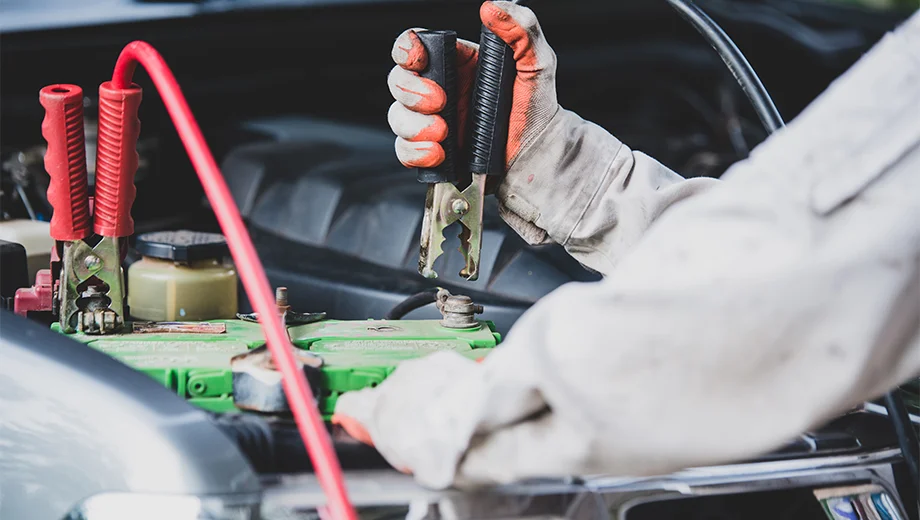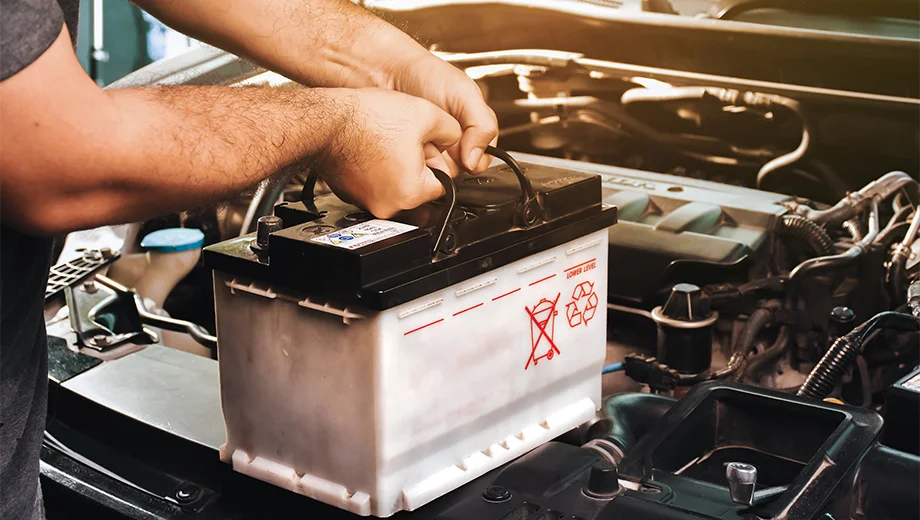How to jump-start a car battery
November 18, 2023
Reviving a vehicle with a flat battery demands know-how and caution. While jump-starting can be effective, mishandling jump leads poses risks to both cars and individuals. At Bodek Recovery, we prioritize safety and recommend seeking our trained mechanics’ expertise to secure and jump-start a car battery. However, if you’re inclined to take on the task yourself, our guide offers insights into this procedure. Remember to refer to your vehicle’s manual for specific instructions that might differ from our steps.

Essential Equipment for Jump-Starting
To jump-start a car, gather the following:
- A functional pair of jump leads.
- Another vehicle with a fully charged battery. It’s important to avoid using hybrids or electric cars to prevent potential damage.
Jump Lead Safety Measures
Prioritizing safety is crucial when using jump leads. Follow these essential measures:
- Thoroughly inspect both the battery and jump lead for any signs of damage, leaks, or visible issues before proceeding.
- Cease the use of jump leads immediately if they become excessively hot during the process.
- Create a safe working environment by removing any loose clothing or accessories that could potentially entangle the engine’s moving parts.
- Prevent any metal objects from coming into contact with the batteries to eliminate the risk of sparks or potential explosions.

Step-by-Step Guide to Jump-Start a Car Battery
Step 1: Positioning Both Vehicles
Align both vehicles so that their batteries are easily accessible without physical contact. Apply the handbrakes and ensure the ignitions are turned off.
Step 2: Connecting the Jump Leads
- Red ‘Positive’ Lead Attachment: Attach the red lead’s positive clamp to the charged battery’s positive terminal (‘+’). Connect the other end of the red lead to the positive terminal on the flat battery.
- Black ‘Negative’ Lead Attachment: Connect one end of the black lead to the negative terminal (‘-‘) of the charged battery. Instead of attaching the other end to the flat battery’s negative terminal, secure it to a piece of solid metal away from the fuel system and battery, ensuring a safe grounding point.
Step 3: Initiating the Jump Start
After connecting all four ends of the jump leads, wait for five minutes. Then, start the engine of the car with the charged battery and let it run for a minute. Leave it running and attempt to start the car with the flat battery. If unsuccessful within five minutes, wait a bit longer before retrying.
Step 4: Running Both Vehicles
Leave both car engines running for 10 minutes after successfully starting the flat battery car.
Step 5: Removing the Jump Leads
Make sure to switch off the engines on both vehicles.
- Carefully remove the cables in reverse order:
- Disconnect the black lead attached to the car with the flat battery.
- Disconnect the black lead from the car with the charged battery.
- Disconnect the red lead attached to both cars.
- Ensure the clamps don’t touch any metal or each other while detaching them.
Step 6: Post-Jump Start Procedure
Allow the car with the newly charged battery to run for approximately 20 minutes. Follow up by driving for at least 30 minutes to ensure the battery recharges fully.

Car Battery Replacement Frequency
Battery life typically spans between 5 to 7 years. However, it’s important to recognize signs indicating a deteriorating battery that might necessitate a replacement. Here are battery replacement signs that your battery might be reaching the end of its lifespan:
- Age: If your battery is older than 5 years, it could struggle to start your car, particularly in colder weather.
- Slow Engine Crank: When starting your vehicle, if you notice the engine cranks more slowly than usual, it might indicate a weakening battery.
- Warning Lights: Dashboard warning lights related to the battery or electrical systems might signal a deteriorating battery.
- Electrical Component Issues: Dimming headlights, flickering interior lights, or issues with other electrical accessories could be due to a declining battery.
- Strange Smells or Corrosion: Foul odors or visible corrosion around the battery terminals could suggest battery trouble.
Should you suspect your battery is failing, seeking professional evaluation or assistance for further diagnosis and potential replacement is advisable. Neglecting this may lead to a situation where you need to jump-start a car battery due to an unexpected breakdown on the road.
Tips for Car Battery Maintenance
A well-maintained car battery ensures reliable performance. Consider these tips to maintain your battery health and prevent dead battery issues:
- Regular Inspection: Check your battery periodically for signs of corrosion, leaks, or damage. Address any issues promptly.
- Secure Battery Connections: Ensure the battery terminals are clean and securely connected. Loose or corroded connections can hinder performance.
- Limit Short Rides: Short trips may not provide enough time for the alternator to charge the battery fully. Occasionally takes longer drives to maintain a charged battery.
- Turn Off Electronics When Parked: Leaving lights or other electronics on while the engine is off can drain the battery. Always double-check before leaving the car.
- Invest in a Battery Charger: Consider owning a battery charger to maintain optimal battery levels, especially during periods of infrequent use.
- Temperature Consideration: Extreme temperatures can impact battery life. Park the car in shaded areas during hot weather and use block heaters in cold climates.
- Regular Maintenance: Adhere to the manufacturer’s recommended maintenance schedule. This includes checking the charging system during routine inspections.
- Battery Testing: Periodically test your battery’s charge and performance, especially if it’s older or showing signs of weakness.
Table of Contents
About Us
We specialize in offering top-tier roadside assistance across London and nearby areas. Our services encompass towing for various vehicles – cars, buses, machinery, and motorcycles. From vehicle transport to fuel delivery and on-site minor repairs, we cater to diverse needs.
Useful links
Find Us
More articles
Affordable Towing Rates Await You!
07 842 78 21 46
Services We Provide
01.Towing Services
Our expert team provides reliable towing services for cars, motorbikes, vans, and more in Greenford and surrounding areas. We can handle vehicles with a total weight of up to 4 tonnes.
02.Roadside Assistance
When you’re stranded in West London, our emergency roadside assistance is just a call away. We offer jump starts and fuel delivery to get you back on the road quickly.
03.Winching and Recovery
Stuck in a tricky spot? We specialize in winching and recovery services, ensuring your vehicle is safely pulled out of ditches, mud, snow, or any challenging situation in West London.